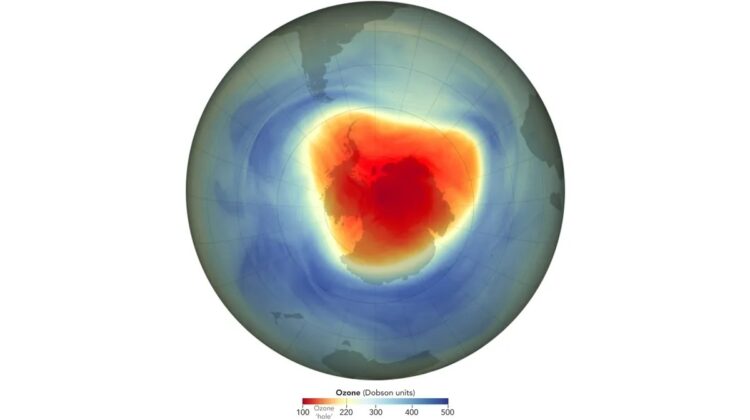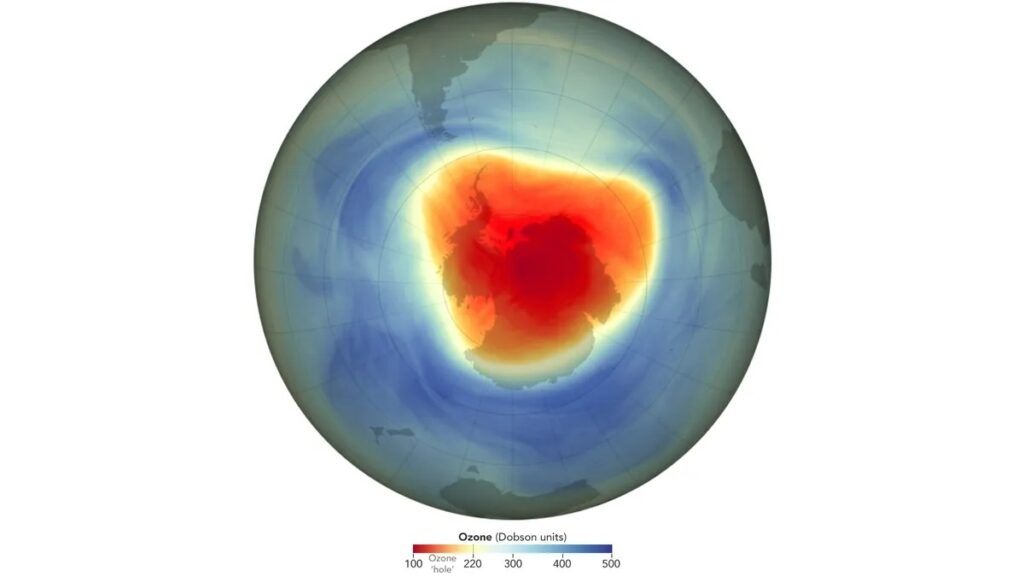
In a significant milestone for environmental conservation, the annual Antarctic ozone hole has reached its smallest size in over three decades. This remarkable development is a direct result of the global community’s concerted efforts to phase out ozone-depleting substances.
A Decade of Progress
The 2024 ozone hole, peaking at approximately 20 million square kilometers, marks a substantial reduction compared to its historical maximum. This positive trend underscores the effectiveness of the Montreal Protocol, an international treaty that has successfully curbed the production and use of harmful chemicals.

Image Credit: NASA/NOAA
The Science Behind the Recovery
Ozone, a vital component of Earth’s atmosphere, shields us from harmful ultraviolet radiation. However, human-made chemicals, primarily chlorofluorocarbons (CFCs), have depleted the ozone layer, leading to the formation of the ozone hole.
The Montreal Protocol, implemented in 1987, has been instrumental in phasing out these ozone-depleting substances. As a result, the ozone layer has gradually begun to recover, and the annual ozone hole has exhibited a declining trend.
A Glimpse into the Future
While the progress made thus far is encouraging, scientists caution that the ozone layer is still far from fully recovering. It is estimated that the ozone hole will not completely close until the mid-21st century.
However, the shrinking ozone hole serves as a powerful reminder of the positive impact that international cooperation can have on environmental issues. By working together, nations can address global challenges and protect our planet for future generations.

Leave a Reply